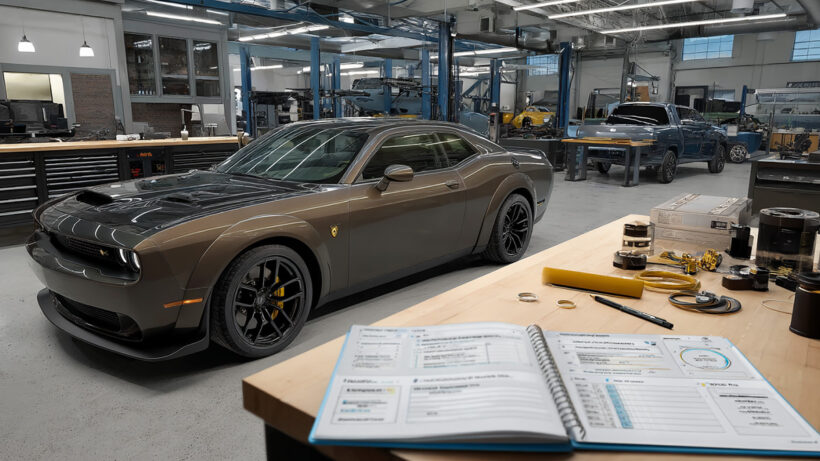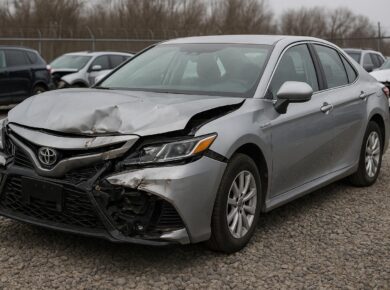Flipping cars can be more than just a side hustle; for some, it’s a full-on business opportunity. But not all cars are created equal when it comes to making a profit. Whether you’re buying and flipping salvage cars or considering other types of vehicles, knowing what to look for and how to assess a car’s potential for flipping is key to your success. If you’re diving into the world of salvage cars, you might be wondering: can you flip salvage cars for a profit? The answer is a resounding yes, but only if you know the right strategies to use.
In this guide, we’ll go through practical steps for flipping salvage cars, covering the best cars to flip, how to assess repair costs, and how to maximize your profits. We’ll explore everything from picking up your first car to knowing what to do with it once it’s ready for sale.
Step 1: Know Which Cars Are Worth Flipping
When it comes to flipping cars, not every vehicle is a goldmine. The best cars for flipping are those that have a higher resale value once fixed up. This means you’ll need to focus on cars that are in high demand and relatively easy to repair. Some vehicles, like the Toyota Camry, are popular for flipping due to their reliability and demand in the used car market.
However, flipping exotic salvage cars can also be a profitable venture, though it requires a more substantial investment and specialized knowledge of high-end cars. The key is to target cars that have a solid demand and can be repaired at a reasonable cost. Pickup trucks are another great option, especially if they’re good cars to flip and are priced right. They’re always in demand, whether it’s for personal use or as work vehicles.
The first step in your journey is to identify which cars fit the bill. For instance, flipping salvage title cars often requires more work but can pay off handsomely, while flipping used cars that are more common might offer quicker turnarounds with a decent profit margin.
Step 2: Research Before Buying a Car
Once you’ve identified a potential car for flipping, it’s time to do your homework. This is where buying and flipping salvage cars can either make or break your business. You need to assess the repair cost and determine if the car can be fixed for a price that allows room for profit. Getting a vehicle history report is a must to understand the car’s past, especially when dealing with salvage title cars. You should also verify any major repairs or accidents the car has been in, as these could affect your ability to resell it later.
For example, if you’re eyeing a car on Facebook Marketplace or from a private seller, the asking price might seem like a steal, but without the right research, you could end up with a car that needs more work than it’s worth.
Always check for potential issues such as engine damage, transmission problems, and the overall condition of the body. Sometimes, even a flipped car can be a money pit if there are hidden issues that aren’t immediately obvious.
Step 3: Estimate the Repair Costs
Once you’ve purchased a salvage car, the next step is assessing the repair cost. Be realistic here. It’s easy to get excited about the potential higher prices you could get for a finished car, but you need to know if it’s worth fixing.
Some cars might need only cosmetic fixes like a paint job or minor bodywork, while others could require extensive engine repairs. Knowing how to fix a car is great, but if you’re not a professional mechanic, it’s worth bringing in a trusted expert or consulting a repair shop for estimates before proceeding.
If you’re dealing with flipping salvage motorcycles or smaller vehicles, the repair costs might be lower, which can lead to a better profit margin. Always weigh the costs against the market demand for that specific vehicle once it’s repaired. If you’re planning on flipping salvage boats, the repairs can be more specialized, requiring a different skill set and set of tools.
Step 4: Know Your Potential Buyers
When it comes to flipping cars, knowing who your potential buyers are can make all the difference. If you’re selling a car that’s ready to hit the road, your buyer might be a private individual looking for a reliable ride. However, for those cars that need more work, your buyer might be a car dealer looking for a project car to fix and resell. Some car buyers prefer to buy directly from a private seller, and you can often negotiate a better deal in these situations.
Another key factor to consider is the state laws that might affect how you buy and sell cars. Some states have stricter rules about transferring salvage titles, while others make the process smoother. Make sure you’re familiar with the local regulations to avoid any surprises when you’re ready to sell.
Step 5: Sell Your Flipped Car at the Right Time
Once you’ve repaired the car, it’s time to sell it. Don’t rush this process. Take the time to create a good sale sign that highlights the car’s key features, such as any recent repairs or upgrades. If you’re selling locally, listing the car on platforms like Facebook Marketplace can help you find potential buyers quickly.
You’ll also need to decide where to sell the car. Should you go through a car dealer, list it on an online marketplace, or try selling it directly to a private buyer? All of these options have their pros and cons, but typically, selling it privately will get you higher prices. The key is to be patient and wait for the right buyer who sees the value in your flipped car.
Step 6: Understand the Profit Potential
Now that you’ve successfully flipped a car, it’s time to take stock of your profit margin. Ideally, the goal of buying and flipping salvage cars is to make a solid return on investment. This means you need to keep your repair costs under control, focus on high-demand vehicles, and aim for vehicles that can be sold for more than their total costs. Flipping salvage cars is profitable, but only if you’re careful about the cars you choose, the repairs you make, and the price at which you sell them.
While it’s tempting to go after the best cars for flipping, sometimes the key to success lies in knowing how to flip a car for the highest return. Your strategy should involve understanding the car’s value before purchasing and maximizing the repairs to increase that value.
Step 7: Keep Track of Your Flips
As you continue your car flipping journey, keep detailed records of every car you buy, repair, and sell. This will help you track what’s working, which cars bring in the best profits, and which repairs offer the most value. Learning from each flip is critical to growing your car flipping business and refining your skills.
If you’re not already tracking which vehicles to flip, now is the time to start. Focus on cars that you know have a reliable market and high demand. Over time, you’ll build a good sense of which vehicles are more profitable and why certain types of repairs increase resale value.
Result? Car Flipping Success!
Flipping cars isn’t a guaranteed way to get rich, but with the right strategies, it can become a solid business that brings in consistent profits. Whether you’re focusing on flipping salvage title cars, dealing with flipping salvage motorcycles, or even flipping exotic salvage cars, knowing what to buy, how to repair, and when to sell is essential. Don’t be afraid to start small and build your experience over time.
With the right focus, buying and selling cars for profit can evolve into a highly profitable venture. Whether you’re interested in flipping used cars or diving into more niche vehicles like flipping salvage boats, there’s plenty of potential for those who are committed to learning and staying ahead of market trends.






